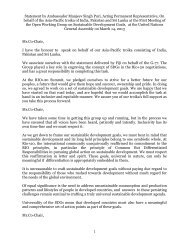STATE OF THE WORLD'S CITIES 2012/2013 Prosperity
STATE OF THE WORLD'S CITIES 2012/2013 Prosperity
STATE OF THE WORLD'S CITIES 2012/2013 Prosperity
Create successful ePaper yourself
Turn your PDF publications into a flip-book with our unique Google optimized e-Paper software.
State of the World’s Cities <strong>2012</strong>/<strong>2013</strong><br />
FACT<br />
A trend closely associated with motorization in Latin<br />
American and Caribbean cities is the decreasing share of<br />
public transport.<br />
POLICy<br />
It would be in the best interests of cities to develop<br />
sustainable public transport solutions that have<br />
positive repercussions on all ‘spokes’ of prosperity.<br />
down to 29 per cent in 2001. 28 In Havana, the total number<br />
of public transport users declined from 3.5 million in 1991<br />
FACT<br />
Bogotá and Curitiba<br />
feature the highest<br />
shares of dedicated bus<br />
lanes in the region, which<br />
have served as models for<br />
BRT across the world.<br />
to 540,000 in 2011. 29 In<br />
Guadalajara the use of<br />
private cars increased<br />
from 30 to 50 per cent of<br />
all trips between the years<br />
2000 and 2010, while the<br />
number of public transport<br />
users declined from 60 to<br />
Curitiba, Brazil: a tubular bus station and sleek, modern bus, part of the city’s integrated transport system.<br />
© Paul Smith/Panos Pictures<br />
54<br />
30 per cent. 30 Factors behind these sharp declines include a<br />
poor perception of public bus services; lack of information on<br />
availability, routes and schedules; crime and safety concerns;<br />
and the long distances that commuters have to walk to bus<br />
stops/terminals.<br />
Cities in the Arab States have the highest level of<br />
vehicle ownership: The quality and maintenance of roads in<br />
Arab cities are high when compared with other developing<br />
countries. However, despite massive investment, the<br />
expansion in road networks has not matched rapid increases<br />
in vehicle numbers, or urban sprawl. Over the past two<br />
decades, the Arab region has witnessed phenomenal rises in<br />
motorization. In 2008, the total number of vehicles reached<br />
26.7 million – growing at a 4.2 per cent annual average<br />
between 1997 and 2008. 31 In Bahrain, Kuwait, Qatar, the<br />
United Arab Emirates and Oman, the ratios of motor vehicles<br />
per 1,000 stand at 509, 507, 724, 313 and 225, respectively. 32<br />
Factors behind this trend include the affluence occasioned by<br />
the oil-driven economic boom, a strong preference for private<br />
cars, subsidized fuel, greater availability of car loans, and lack<br />
of effective mass transit systems. High levels of motorization<br />
in Arab cities have led to<br />
chronic traffic congestion.<br />
The traffic situation in<br />
Dubai typifies those of cities<br />
in the Gulf Cooperation<br />
Council countries: with<br />
over one million cars,<br />
the ownership ratio –<br />
541:1,000 – exceeds those<br />
of London (345) and New<br />
York (444). 33<br />
Dubai‘s Metro began<br />
operating as a fully<br />
automated rail transit<br />
FACT Public<br />
transport<br />
systems are inadequate<br />
in many cities of this<br />
region. For instance,<br />
in Beirut, fewer<br />
than 10 per cent of<br />
commuters are served<br />
by public transport 34 ;<br />
in Amman, the<br />
corresponding figure is<br />
14 per cent. 35




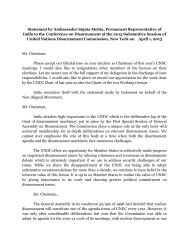
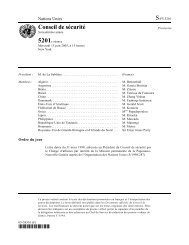
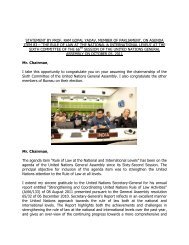
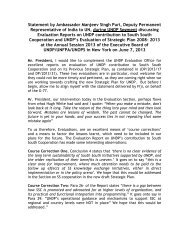
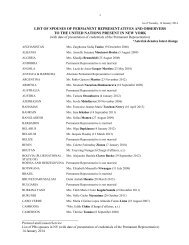
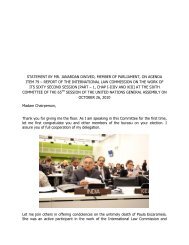
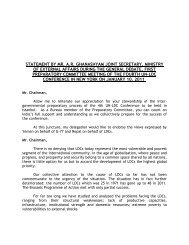
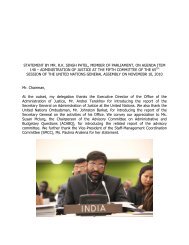

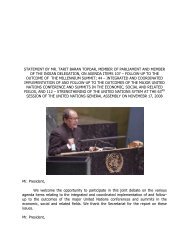
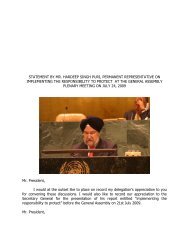
![1 statement by dr.[mrs] kakoli ghosh dastidar - Member States Portal](https://img.yumpu.com/27526598/1/190x245/1-statement-by-drmrs-kakoli-ghosh-dastidar-member-states-portal.jpg?quality=85)
